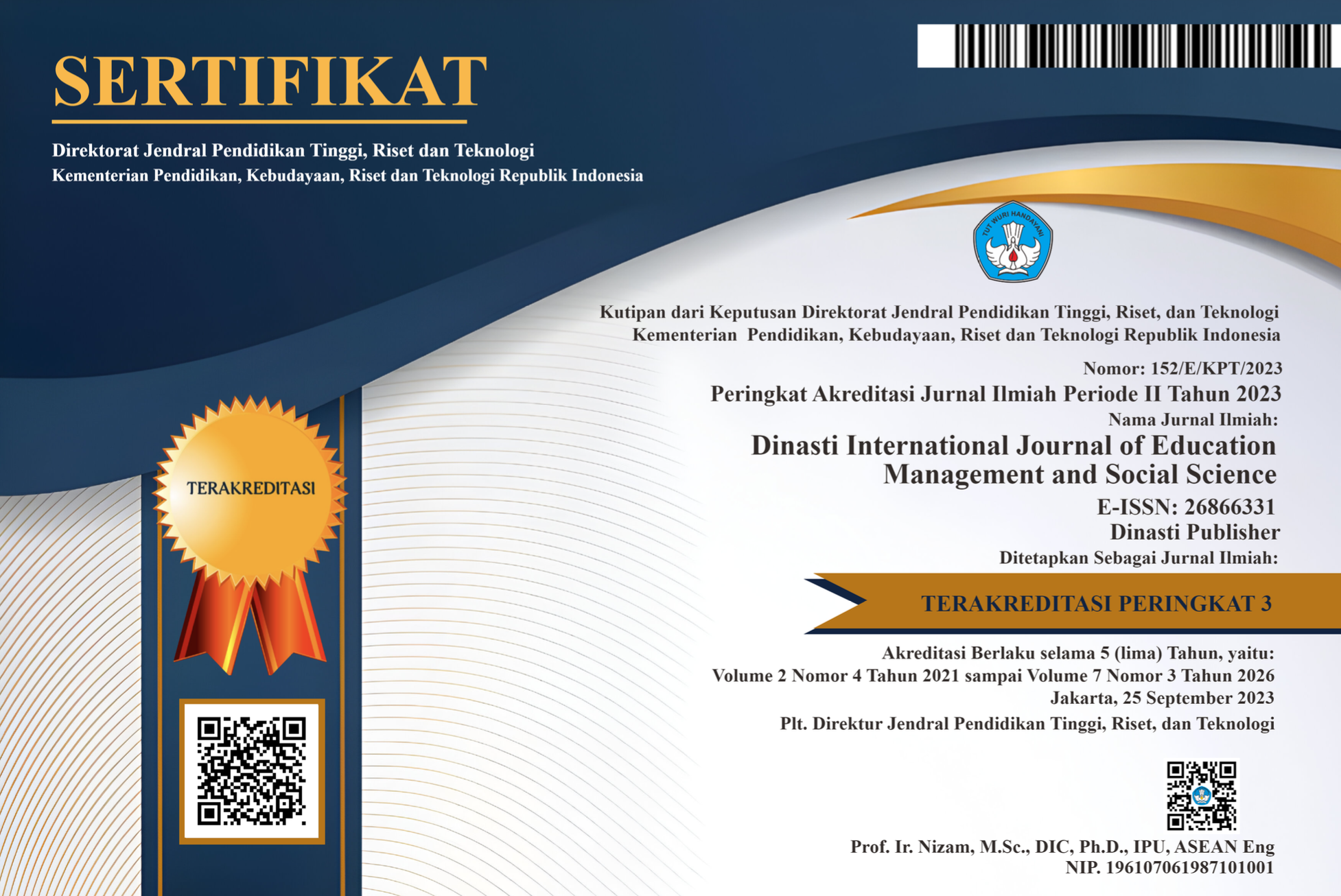Examining the Effect of Social Media Engagement on Purchase Intention: A Study of Generation Z Consumers
DOI:
https://doi.org/10.38035/dijemss.v6i5.4634Keywords:
Social Media Engagement, Purchase Intent, Generation Z, Digital Marketing, PLS-SEMAbstract
The digital revolution has significantly changed the marketing landscape, particularly through social media, which is now the main platform for building relationships between brands and consumers. This study aims to examine the influence of social media involvement on the purchase intention of Generation Z consumers in Indonesia. This study uses a quantitative approach with a survey method, collecting data from 250 Generation Z respondents who actively interact with brands on social media. Data analysis was carried out using Partial Least Squares Structural Equation Modeling (PLS-SEM). The results show that social media engagement has a positive and significant effect on purchase intent, with a strong path coefficient and a high level of significance. These findings reinforce the Stimulus-Organism-Response (S-O-R) model in the context of digital consumer behavior, as well as emphasize the importance of active engagement strategies to drive purchasing decisions. This research makes a theoretical contribution to the social media engagement literature and offers managerial implications for brands looking to optimize digital interactions with Generation Z consumers.
References
Brodie, R. J., Hollebeek, L. D., Juri?, B., & Ili?, A. (2011). Customer engagement: Conceptual domain, fundamental propositions, and implications for research. Journal of Service Research, 14(3), 252–271. https://doi.org/10.1177/1094670511411703
Dessart, L., Veloutsou, C., & Morgan-Thomas, A. (2015). Consumer engagement in online brand communities: A social media perspective. Journal of Product & Brand Management, 24(1), 28–42. https://doi.org/10.1108/JPBM-06-2014-0635
Dodds, W. B., Monroe, K. B., & Grewal, D. (1991). Effects of price, brand, and store information on buyers’ product evaluations. Journal of Marketing Research, 28(3), 307–319. https://doi.org/10.1177/002224379102800305
Hair, J. F., Hult, G. T. M., Ringle, C. M., & Sarstedt, M. (2019). A primer on partial least squares structural equation modeling (PLS-SEM) (2nd ed.). Sage Publications.
Hollebeek, L. D., Glynn, M. S., & Brodie, R. J. (2014). Consumer brand engagement in social media: Conceptualization, scale development, and validation. Journal of Interactive Marketing, 28(2), 149–165. https://doi.org/10.1016/j.intmar.2013.12.002
Mehrabian, A., & Russell, J. A. (1974). An approach to environmental psychology. MIT Press.
Statista. (2024). Social media usage among Generation Z worldwide. Retrieved from https://www.statista.com
Turner, A. (2015). Generation Z: Technology and social interest. The Journal of Individual Psychology, 71(2), 103–113. https://doi.org/10.1353/jip.2015.0021
Downloads
Published
How to Cite
Issue
Section
License
Copyright (c) 2025 Wikrama Wardana

This work is licensed under a Creative Commons Attribution 4.0 International License.
Authors who publish their manuscripts in this journal agree to the following conditions:
- The copyright on each article belongs to the author(s).
- The author acknowledges that the Dinasti International Journal of Education Management and Social Science (DIJEMSS) has the right to be the first to publish with a Creative Commons Attribution 4.0 International license (Attribution 4.0 International (CC BY 4.0).
- Authors can submit articles separately, arrange for the non-exclusive distribution of manuscripts that have been published in this journal into other versions (e.g., sent to the author's institutional repository, publication into books, etc.), by acknowledging that the manuscript has been published for the first time in the Dinasti International Journal of Education Management and Social Science (DIJEMSS).















































